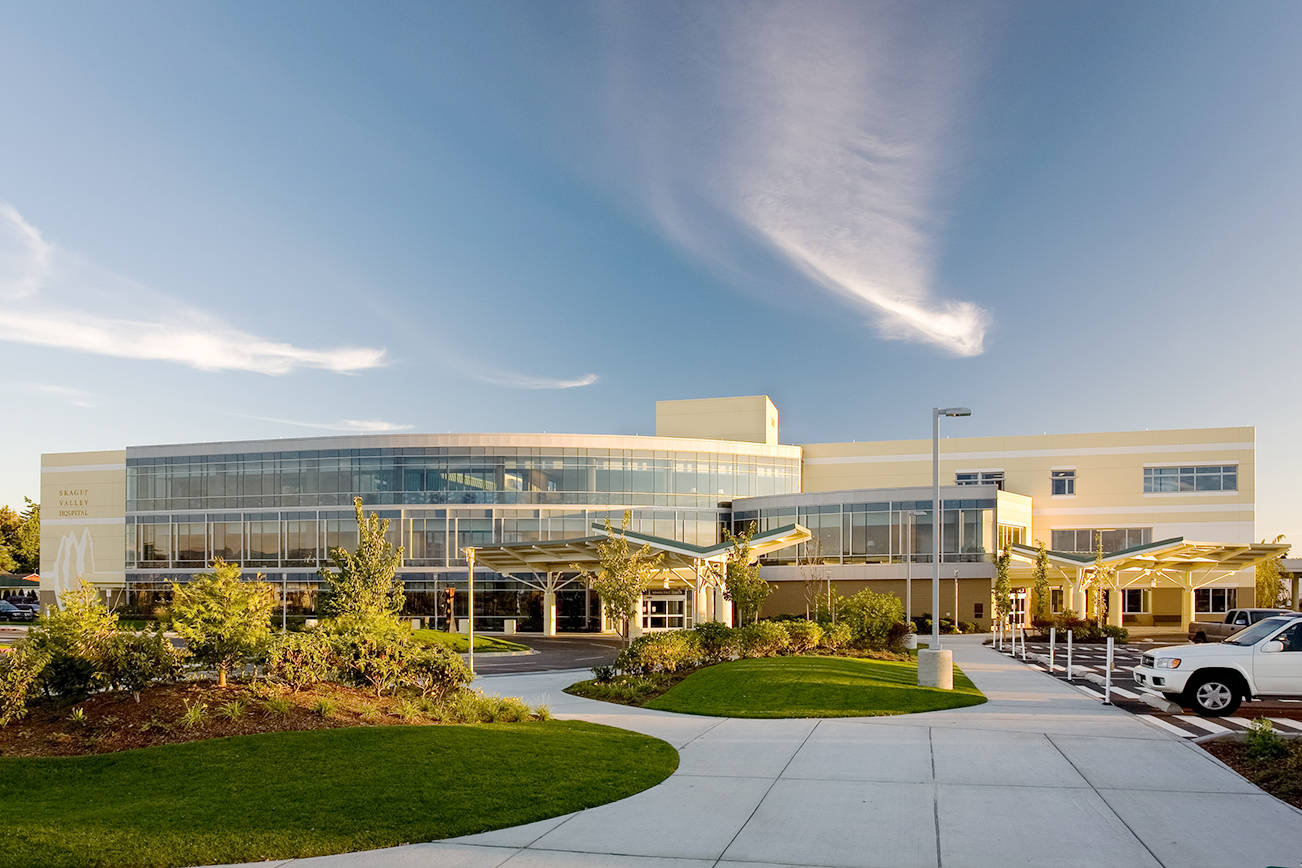Submitted by Skagit Regional Health.
Due to rapidly increasing COVID-19 cases in northwest Washington, Skagit Regional Health has activated a surge plan to make bed capacity available to accommodate any substantial influx of patients needing hospitalization.
“Each health system has a plan in place to adjust operations in case of a sharp increase in patients who need hospitalization,” Skagit Regional Health Chief Medical Officer Connie Davis, M.D., said. “Given the current COVID-19 situation in our communities, with numbers increasing steadily, it has become necessary for us to activate our surge plan and start following the steps.”
Skagit Regional Health, like most healthcare organizations, updates a standard surge plan regularly as part of ongoing emergency preparedness activities. Skagit Regional Health runs Skagit Valley Hospital in Mount Vernon, Washington, licensed for 137 beds, and Cascade Valley Hospital, licensed for 48 beds. Surge plans are implemented any time patient volumes exceed typical licensed capacity for a hospital, outlining the steps to take to utilize additional appropriate care areas for inpatient care, such as the observation units and outpatient areas.
Additionally, Skagit Regional Health participates in the regional network of hospitals that transfers patients between facilities when needed, to ensure patients get the right level of care related to their situation. Sometimes that means transferring patients out of Skagit Regional Health facilities, and it also means patients are transferred in from other hospitals when necessary.
“This is a fluid situation,” Skagit Regional Health Chief Quality Officer Josh Griggs, M.D., said. “The numbers change daily. Activating our surge plan is the next step in a well-planned and thoughtful approach to this situation. We are committed to ensuring patient safety and providing quality patient care. We will continue to do so as we move into the surge phase.”
Surge plans also outline decision trees for prioritizing non-urgent medical procedures, particularly procedures that require the patient to be admitted to the hospital for recovery. “Approximately 25 percent of our surgeries require the patient to stay overnight in the hospital,” Skagit Regional Health Regional Director of Surgical Services Kelly Bradford said. “We are evaluating each surgical case, along with our census, and moving forward with surgery for clinically appropriate patients. Our goal is to continue providing non-urgent medical procedures for our community as long as possible, while balancing the needs of our increased patient population related to the COVID-19 surge.”
Davis also reinforced the need for the people of the region to take all of the precautions to avoid becoming ill, slowing the spread and to bring down the demand for hospital beds.
“Everyone needs to be wearing a mask, washing their hands, distancing from others, avoiding travel and limiting contact with people from outside their households,” Davis said. “I understand that will be especially hard during the holiday period, however, it’s how we can protect each other and reduce the stress on our healthcare system’s resources.”
When COVID-19 arrived in March, a designated team at Skagit Regional Health began working on a COVID-19 specific surge plan. This virus adds additional requirements, such as maintaining elevated personal protective equipment reserves and implementing airborne precautions for large volumes of patients. Surge plans are important for healthcare systems because they keep essential services open by consolidating resources and converting non-essential spaces to patient care areas, Davis said.
“This is the important work we need to do to stay open and operational,” Davis said. “It is important that patients not delay urgent or emergent healthcare. We’ve seen some unfortunate outcomes in these past several months because people avoided coming to the Emergency Department when they had serious health issues, such as chest pain or abdominal pain. We have a team of people working night and day to make sure patient care is not interrupted. Our clinicians are doing an excellent job caring for patients and will continue to do so as we move through this surge.”
“Operating in surge conditions is not ideal but we are prepared,” Griggs added. “It’s important for the community to know we are here to safely care for them, and that we are ready. At the same time, this is a serious situation in our region. We urge people to wear a mask, social distance, avoid gathering indoors and wash your hands frequently. The decisions each of us make today will determine if this situation improves or declines.”



